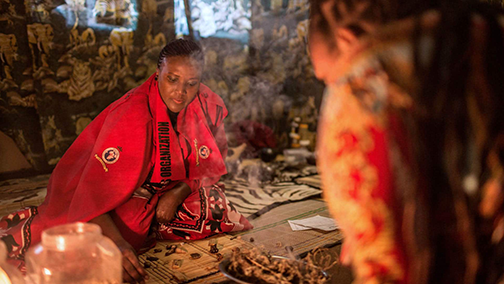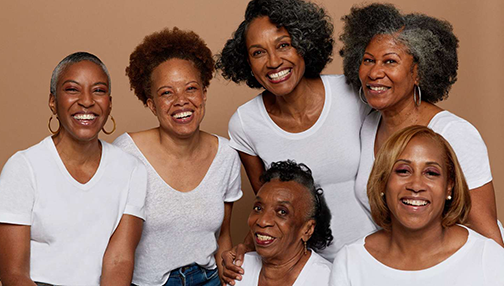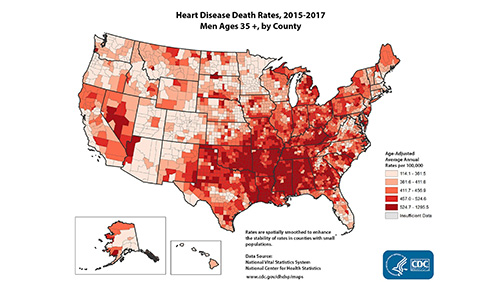AFRICA WELLNESS

Sponsored by THE TIMES as a Community Service
Traditional medicines are part of the cultural heritage of many Africans. About 80% of the African continent’s population use these medicines for healthcare.
Other reasons include affordability, accessibility, patient dissatisfaction with conventional medicine, and the common misconception that “natural” is “safe”.
The growing recognition of traditional medicine resulted in the first World Health Organization global summit on the topic, in August 2023, with the theme “Health and Wellbeing for All”.
You likely know someone who seems to age slowly, appearing years younger than their birth date suggests. And you likely have seen the opposite – someone whose body and mind seem much more ravaged by time than others. Why do some people seem to glide though their golden years and others physiologically struggle in midlife?
There are many different definitions of aging, but scientists generally agree upon some common features: Aging is a time-dependent process that results in increased vulnerability to disease, injury and death. This process is both intrinsic, when your own body causes new problems, and extrinsic, when environmental insults damage your tissues.
Latest report has indicated that for the first time, autism is being diagnosed more frequently in Black and Hispanic children than in white kids in the U.S., the Centers for Disease Control and Prevention has revealed.
Among all U.S. 8-year-olds, 1 in 36 had autism in 2020, the CDC estimated. That’s up from 1 in 44 two years earlier.
But the rate rose faster for children of color than for white kids. The new estimates suggest that about 3% of Black, Hispanic and Asian or Pacific Islander children have an autism diagnosis, compared with about 2% of white kids.
A new study shows that the cost of medical care in the United States for people who suffer from sickle cell disease exceeds $1.1 billion USD in one year. To realize the total cost of SCD, we need to add to it the yearly per/person cost in lost wages, and the toll of the economic hardships borne by the families of those who carry SCD, which has been estimated in another study to stand at $1.5 billion USD, bringing the sum total to a staggering $2.6 billion per year. This constitutes a debilitating drain on American families of color who are naturally susceptible to this condition, the U.S. healthcare/medical sector, and the overall economy of the United States.
CLICK HERE TO READ THE FIRST PART of the series:
As had been stated in the first part of this presentation by The African Times/USA research team of editors about the health condition known as Sickle Cell Disorder (SCD) that affects over 200,000 Americans with direct ancestry connection with the malaria belt of Africa, SCD is an extremely deadly health and healthcare challenge for people of color in the United States and all over the world. It is a condition that needs to be prioritized within the national and international forums and you will see why we believe that SCD needs to be tackled at both the personal and family levels.
CLICK HERE TO READ THE FIRST PART of the series:
A neglected, double-edged sword blood disorder – with one side that protects against malaria and the other, an insidious blood condition, not generally well recognized, that is a trigger for many of today’s diseases, ailments and excruciating suffering. The disease is caused by a two-letter change, or mutation, in human DNA.
SCD is a major cause of mortality among newborns – between 50% and 90% of children world-wide die before reaching the age of five. In the US, this has been substantially reduced through the introduction of penicillin and other new drug therapies, however caution needs to be exercised. It is estimated that without interventions, over half of newborns die before celebrating their fifth birthday.
Countries that are members of the United Nations are obligated to report cases of unusual diseases that have the potential to become global health threats. In May 2022, more than a dozen countries in Europe, the Americas and other regions of the world that had never before had cases of monkeypox started to report cases occurring within their borders.
In response, the director-general of the World Health Organization, Tedros Adhanom Ghebreyesus, convened a monkeypox emergency committee to track the evolving situation. At the committee’s first meeting on June 23, 2022, the members observed that the “multi-country outbreak” might be stabilizing as case counts had plateaued in several countries.
Almost 1 In Every 4 Adult Male Deaths in the United States is Caused by Heart Disease and African American men account for 100,000 more Cardiovascular Disease Deaths than Caucasian Men.
How does heart disease affect men?
– Heart disease is the leading cause of death for men in the United States, killing 357,761 men in 2019—that is about 1 in every 4 male deaths.
– Heart disease is the leading cause of death for men of most racial and ethnic groups in the United States, including African Americans, American Indians or Alaska.
As we debut this new section, our research team is currently working on in-depth series about one of the most dominant health conditions that has afflicted persons of African descent across the globe for along time. Known as Sickle Cell Blood Disorder (SCD), available statistics indicate that this often misunderstood disease affects over 100,000 Americans of African extraction. Our team is available to discuss with those familiar with anyone who may have information or stories to share about SCD in our various communities.
You can reach them at [email protected]
As Black people in the U.S., we typically have lower levels of vitamin D than our white peers, as darker skin has natural sun protection and needs longer sun exposure to make the vitamin. But they are relatively less affected by lack of vitamin D, as measured by weak bones, falls, and fractures.
Your body uses it to absorb minerals like calcium and phosphorus. That makes your teeth and bones strong. Vitamin D supports your muscles, nerves, and immune system. You can get “D” from sunshine on your skin and from eating eggs, fatty fish, and fortified foods like milk and cereal.









